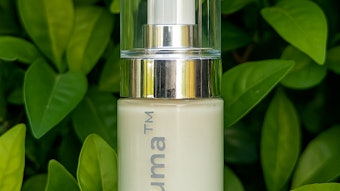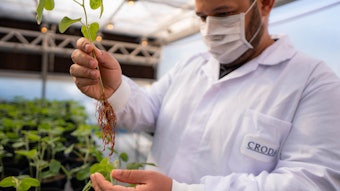- Although regulatory bodies may not actively be policing claims, overstated and druglike claims may still have negative ramifications for the industry.
- Growing consumer expectations and the increasing interest for natural and organic products are among the issues that put more pressure on world governments to create new rules and regulations.
- A simple surveillance of the media that consumers turn to the most for information on beauty products is a good first step for the beauty industry in assessing and altering, if needed, its approach to claims.
Every few years, the same question arises: will the U.S. Food and Drug Administration (FDA) ever push to create a “cosmeceuticals” category? The term, widely used by the industry, has no legitimacy. It was created to imply that cosmetics are designed to do more than just beautify, and somehow treat without really being drugs.
Was the intent of industry, when it began using that term, to really see a new category emerge that would have given products more credibility? If so, did the industry ever think that the risk of seeing the U.S. Congress regulate that category was real? And, in this case, what were we thinking? Yes, there would be grounds for such a category in the letter of the law, given the way the U.S. system functions, essentially based on claims. When a product claims to repair DNA, impact stem cells or repair stretch marks or even wrinkles, it is no longer a cosmetic claim. As shrewd as certain legal teams may be in making those claims—managing to not “really” make the claims yet leaving the implication there that these are effects of the finished product—some have been caught at their own game.
But it must be admitted, the actions of the FDA against such claims, or family of claims, have remained mild, at best.
In fact, what seems to be driving the FDA is hardly ever solely the claim and the deception that some claims represent, considering that they are often not backed by solid clinical evidence (no, before-and-after pictures are not solid clinical evidence) and only in vitro studies.
In the few instances where companies were actually prosecuted by the FDA, there seems to have been other interests at play.
A Short Case Study
When consumer safety is at stake, the FDA acts swiftly. After all, its first priority is the public’s protection. However, it is not often the case with the vast majority of companies making drug claims on their products. But when it is, the FDA’s actions do not stop at the standard warning letter.
In the case of one brand’s eyelash cosmetic, in November 2007, not only was a warning letter issued but the FDA had more than 12,000 units of the product seized. The company stopped manufacturing the product immediately.
In that case, the product was mislabeled (the brand made drug claims, i.e. to increase eyelash growth), it was considered an adulterated cosmetic (it contained an active ingredient, bimatoprost, FDA-approved to treat elevated intraocular pressure) and was potentially dangerous to users as bimatoprost presented side effects that could lead to decreased vision.
It is interesting to note that, in this case, the product was an unapproved version of a glaucoma-treatment drug, Lumigan from Allergan, and the only approved drug in its category. In another fairly recent instance of an FDA warning letter for a beauty product making a drug claim, a a brand owner is informed that the claims made on its product are drug claims. Some of the claims that are listed are the stretch mark claims, but also, and more interestingly, the “better than Botox” claim, and an array of very standard claims found on many other cosmetic products:
- Optimum glycosaminoglycan and collagen synthesis […] to diminish fine lines, wrinkles and crow’s-feet.
- Superior wrinkle-reducing properties of a patented oligo-peptide.
- Significant improvement in wrinkle depth, length, wrinkle volume. [Product] actually increases the synthesis of new collagen ... , making your skin thicker and firmer.
Two facts are interesting in this case: There is no threat to consumer safety and many of the claims that the FDA points out to be “illegal” claims are found on many other products currently on the market. They are made in more or less subtle ways, but they are there. So what gives? Why are those products singled out, out of thousands of other products? Consider that, like the lash example, the second example bore claims very similar to an Allergan product—Botox.
According to Steinberg and Associates’ president/founder, and Cosmetics & Toiletries magazine columnist David Steinberg, very simply put, it is a matter of priority.
FDA action is driven first by customer safety, industry’s interest secondly and then pure compliance—with very little means to apply the rules. So FDA actions often simply reflect this order, and are instigated from outside the agency.
“The Botox [like] claim is right in Allergan’s backyard, obviously there was pressure put on the FDA to send the letter,” offers Steinberg. “The exact same thing probably helped the agency pay attention to the [lash] product.”
The bottom line is that, in most cases, consumer’s safety is not endangered by most of the claims that the FDA would consider to be drug claims.b
“Basically, if you come eat on someone else’s plate, particularly one as powerful as Allergan, and you also manage to be loud about it—even if your product is not dangerous—you are more likely to get in trouble,” adds Steinberg, “But frankly, the FDA has a lot on its plate, and customer safety is its priority. It can’t possibly go after everybody that makes a claim that looks like a drug claim. It has to focus its efforts.”
Steinberg believes that there is no immediate indication that the FDA will reinforce the regulatory burden on cosmetics, given how difficult it is for the agency to keep up with the enforcement of current regulations.
George McCarty, former technical director at a major U.S. private label manufacturing company and now an independent consultant with 40 years’ experience in the industry, still believes that a lot of the claims made today could get the industry in trouble.
“When you say that you help DNA repair or that you increase collagen production, you are making a drug claim,” he says. “The moment you start saying that you are changing skin physiology, may it be by repairing damage or affecting any skin function, it doesn’t matter whether you limit yourself to the epidermis. And in most cases, we know full well we don’t limit ourselves to that. All small molecules pass the dermal-epidermal junction (DEJ). “At some point, the FDA is going to have to rule more tightly on this. Maybe it will demand more studies, maybe it will create new drug categories or maybe it will just ask us to prove that [product ingredients/activity does] not pass the DEJ.”
That would definitely be bad news for an industry that is already inundated with regulations, with no hopes in sight for anything to lighten the load.
Whether the regulatory scenario continues its current course or restrictions tighten, the industry’s burden grows every year. Various consumer demands and expectations, expressed loudly through social media or through non-governmental organizations (NGOs), the increasing interest in natural and organic products (largely due to consumers’ growing attention to environmental issues), and the like, all put more pressure on world governments to create new rules. And that trend is not going to ease up anytime soon.
Playing the NGOs Game
There are many cases in which the enforcement of regulations or the creation of new ones, wherever it stems from, is the result of reckless industry behavior.
That became painfully obvious for Frederic Demarne, head of R&D at Gattefossé, which manufactures and markets ingredients and application technologies.
“Most of the regulations recently adopted, whether it is the European Union’s Regulation on Registration, Evaluation, Authorisation and Restriction of Chemicals (REACH) or the restrictions on parabens (which could result into a ban) were adopted because of NGO pressure, but also because industry played NGOs’ game. In order to make a quick buck, many played the ‘parabens-free’ game, the organic game or the ‘preservative-free’ game. It is much easier to sell products without parabens than it is to stand up to NGOs or to educate customers about bogus science, like the one that was used as the starting point for the parabens ban.”
In that last case, it is interesting to note that the very initiator of the debate came out to refute the misleading interpretations that had been made. In that case, the science was not seriously flawed, but the conclusions that were drawn from it were, mostly by people who didn’t have the credentials necessary to draw those conclusions.
To illustrate, consider how short the time line has become for an NGO-raised issue or grievance to be resolved.
In 1990, I wrote my thesis on the possible alternatives to animal testing. I did this while completing an internship at Chanel. The brand was worried that it would become targeted by animal rights activists against animal testing. PETA’s actions were violent, and they had already organized a very high profile boycott of Revlon’s products. They were also organizing protests against L’Oréal products. No one at Chanel wanted to take the risk of seeing the famous store on Paris’ Rue Cambon taken over by people spreading pig’s blood. Alternatives to animal testing were already available. The debate was well underway, but it took another 14 years for the ban to be enacted in Europe on finished goods and another five for it to include ingredients.
Now consider, between the date of the publication that fueled the parabens debate (2004) and the review of those products by an ad-hoc commission at the French FDA, only six months passed. In the last five years, even major brands have been removing parabens from their formulas, regardless of the fact that every report that has come out ever since has exonerated the straight chain parabens from being risky for human use at the recommended and usual doses. If the industry doesn’t react or keeps using the short-term gain strategy that play to the NGOs’ game, those products might be entirely banned from cosmetics formulas at some point.
It is urgent for the industry to start rethinking the way it deals with those crises. A positive crisis communication strategy must be created for the industry as a whole. The industry must not continue to bury its head in the sand when a crisis does arise, focusing on making money short-term while shooting itself in the foot.
In the case of parabens, the fact is that most brands started to pull them from formulas, implying that they tacitly approve the rumor that parabens where/are indeed harmful to their consumers. This may increase sales for the short-term, but when the industry takes this path, it basically secures that fact that these unproven comments will become the rule in the long-term.
And the implications of this have longer-term negative consequences. For example, a case such as that of parabens usually leads to misleading packaging. By saying and emphasizing the fact that the product is “free” from something, the implication is that the something the product is free of is bad. The industry, the experts on cosmetic ingredients and creating beauty products, is playing the game of groups whose agenda is, in many cases, political rather than scientific.
It is also implying that, by using that ingredient all along, the industry has been wrong/harming consumers all along, thus further degrading its image—which is already badly dented.
The industry would be very well advised to clean up a little bit on its current practices to revamp a rapidly degrading image.c
But, before the industry turns to drastic measures, a simple surveillance of the media that consumers turn to the most when it comes to getting information on beauty products would be a good first step. Go to the “Personal Care” page on Wikipedia and assess the extent of the damage. It is clear that the very people who formulate, test, produce and market beauty products obviously never bothered to add their own take to that page.
An entire section is dedicated to harmful ingredients, none to the progress that has been made in safety and toxicity testing or in the development of active ingredients.
Consider what section 4 of the page, “Chemicals and Personal Care Products” mentions: “Cosmetics and personal care products often include toxins such as formaldehyde, phthalates, parabens, sodium borate, etc. Research has shown that 35% of all cosmetics contain parabens and that 6% of the population has a cosmetic allergy usually related to fragrances or preservatives. The most prevalent contact allergy is formaldehyde where it is estimated that 3.7% of the population suffers from contact allergies with this preservative (Lundov 2009).
In addition to these preservatives there are other synthetic chemicals, which are commonly found in cosmetics and personal care products, some of which are listed [later in the quoted text, but not published here]. Also an important aspect to think about is that while these chemicals are used as preservatives the efficiency of these products isn’t widely studied meaning that perhaps we could be using lower doses in our cosmetics that would prevent microbial activity from contaminating them, but also be conscious of the possible adverse health affects of too many preservatives.”
And it doesn’t stop there, as the “solutions” section goes on to describe what can be done to control the big bad wolf that is the personal care industry, citing the Environmental Working Group’s Web site (www.cosmeticsdatabase.com), which rates personal care products. Another feature could be written on how those ratings are done, but, for now, form your own opinion if you care to visit the site.
What is being discussed here is not just the image of the industry, it is its survival and the safety of the consumer. If preservatives are banned one after the other, you will see more and more contaminated products hitting the marketplace or shabby substitutes with no documented history of innocuity.
Moreover, the industry could see more ridiculous regulations, and not the ones that it needs. This alone could put the prosperity of the industry, as a whole, in jeopardy. In conclusion, it seems that a lot of the answers are in the hands of the industry, which definitely has the tools to:
- Exercise restraint when making efficacy claims to avoid harsher enforcement of current regulations.
- Exercise restraint when making innocuity (“free”) claims and natural claims (another topic to be discussed in a future feature.)
- Create and use its own voice in the general media and start seriously addressing false rumors before they get out of control. That means having a real crisis communication policy allowing the industry to hit all fronts—scientific and public—through traditional media and social media.
- Lobby authorities to find more productive regulations to control number two above more efficiently.
Editor’s note: The author would like to thank THOR Personal Care SAS (147, rue Irène Joliot Curie, BP 90875—La Croix Saint Ouen, F-60208 Compiegne Cx—France), notably applications scientist Géraldine Louvet-Pommier de la Prade, for input and insight on the status of parabens in the European Union.
a Additional information on FDA actions and warning letters is available on its Web site (www.fda.gov). The two examples in this feature were examples the FDA chose to point out to the author during her research.
b In 2007, three letters were issued addressing topical skin care preparations bearing drug claims and being marketed as cosmetics, while one was sent in 2006, two in 2005 and one in 2004.
c In his article “Labeling Claims—Untangling the Rules” in the September issue of GCI magazine (available online at www.GCImagazine.com and originally published in the August 2009 issue of Cosmetics & Toiletries magazine), David Steinberg outlines the negative impact caused by “free from” labels.
Marie Alice Dibon, PharmD, is the principal at Alice Communications, Inc., helping companies in the life science sector to develop innovative technologies.










